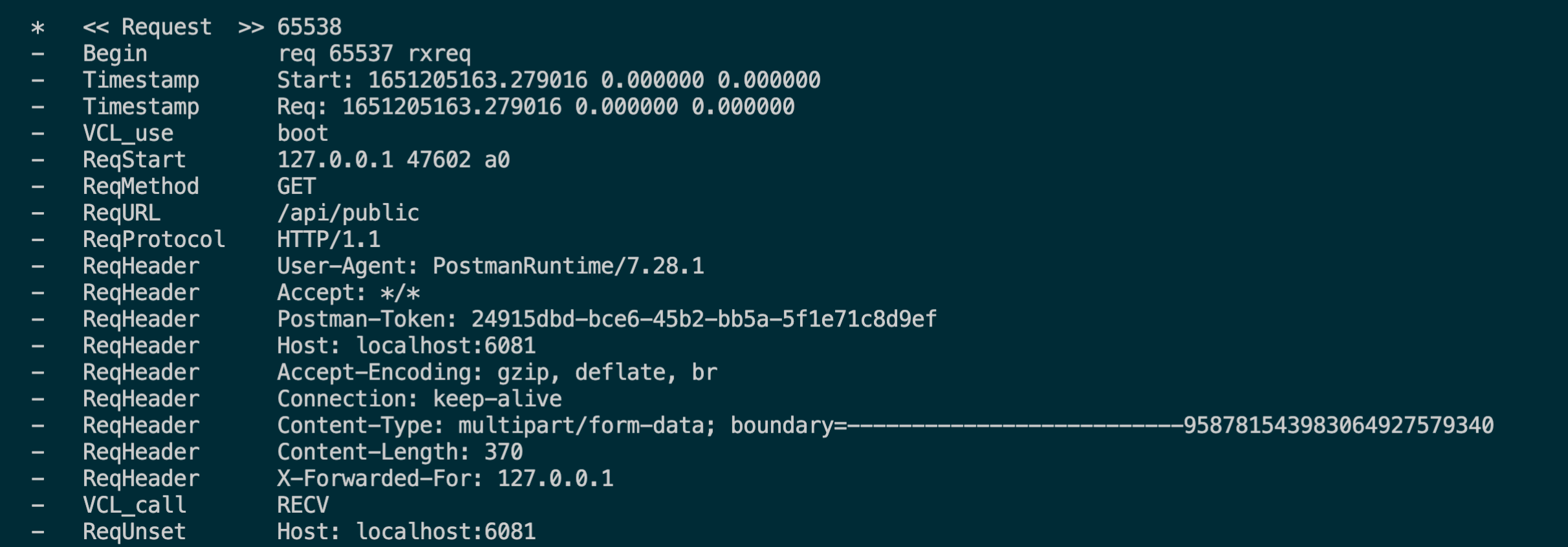如何使用Vanish转发流量
Varnish using for new fresh
What is varnish
- Varnish is a http cache tool for accelerating http request response.
- The configuration language of varnish is named as VCL, which can handle the incoming requests
- decide what content you want to server
- from where you want to get the content
- how the request or response should be altered
- beef-sandwich

- How does it work
- based on VCL program, it can ‘Which backend has this content, how long time can we cache it, is it accessible for this request, should it be redirected elsewhere and so on’.
- VCL can be compiled into C-program which is complied into a shared lib. This will happen to varnish loads VCL program.
- core features
- caching, using Cache-Control HTTP header
- Content Composition
- support many different OS platforms
- full control of every request
How to install varnish
brew install varnishsudo mv /usr/local/opt/varnish/sbin/varnishd /usr/local/bin/- then varnishd can be executed directly
How to use varnish
in local
- add default.vcl file
- run the following cmd
varnishd -a :6081,HTTP -f default.vcl -F- -a listening port
- -f configuration file location
- -F run varnish in the front
- call the
127.0.0.1/api/publicfor testing
by docker
use docker cmd directly
1
2
3
4
5
6docker run --rm -v $(PWD)/default-docker.vcl:/etc/varnish/default.vcl:ro \
--tmpfs /var/lib/varnish/varnishd:exec \
--name my-varnish-container \
-p 8081:80 \
-e VARNISH_SIZE=2G \
varnish- varnish proxy the local machine service, the host of vcl should be set as “docker.mac.for.localhost”.
- tips:
- varnish port in docker is 80
use docker file
create a docker file
mount the vcl file into your custom image
run your custom image
1
docker run -it --tmpfs /var/lib/varnish/varnishd:exec -p 8081:80 local-varnish
docker-compose
in local k8s
- create k8s configMap for mounting default.vcl
kubectl create configmap varnish-vcl --from-file=default.vcl- deploy
kubectl apply -f deployment/deployment.yaml- call api
http://localhost:6081/api/public1
2
3{
"message": "All good. You DO NOT need to be authenticated to call /api/public."
}validate
step1
1
kubectl exec -it varnish-proxy-5b4844596c-22hsl -c varnish-for-be -- sh
step2
run varnishlog
issue:
- if not define the Type in service yaml, it will use the default value ClusterIP
- Solution: add type: NodePort under spec section
- Title: 如何使用Vanish转发流量
- Author: Xiao Qiang
- Created at : 2023-03-05 15:04:12
- Updated at : 2025-08-06 15:16:17
- Link: http://fdslk.github.io/tech/ops/cache/2023/03/05/ops-vanish/
- License: This work is licensed under CC BY-NC-SA 4.0.
Comments

